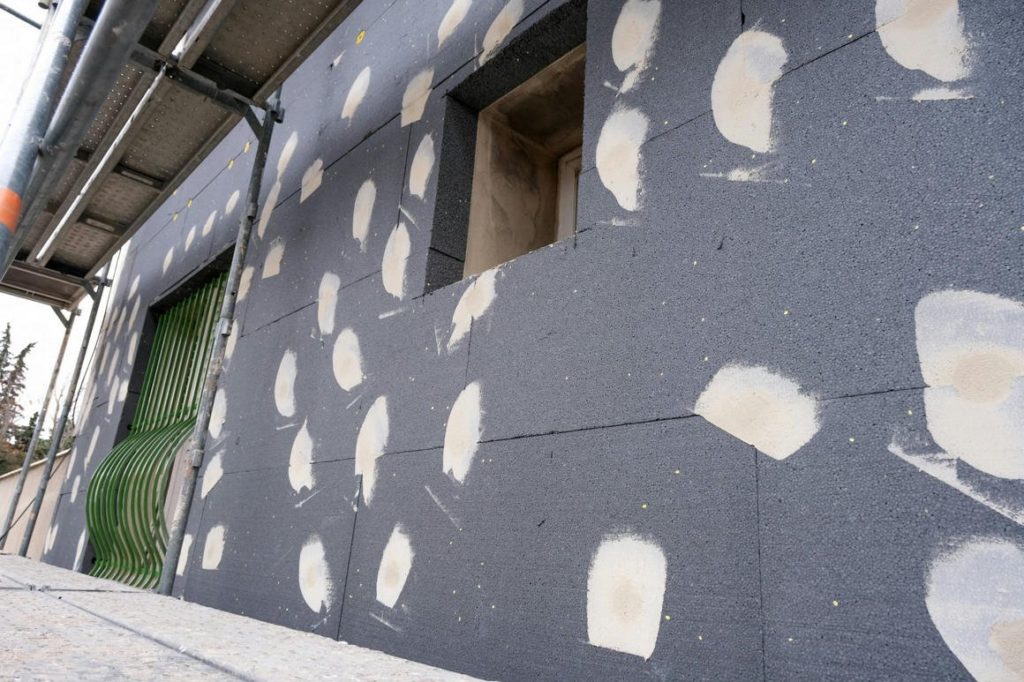Selecting suitable materials and finding their right size might cut back the energy bills of families and operators in an environmentally-friendly way, saving them a considerable sum as energy prices have been significantly increasing. According to Masterplast Nyrt. Technical Manager Gábor Csokló, the only limitation of this boom is the lack of capacities in construction, however, there is great potential in materials and manufacturing.
There has never been any doubt about the importance of insulation.
International regulations regarding building energy efficiency have specified what insulation shall be applied to new buildings. Regulations were aimed at environmental protection since the European Union and its member states have set strict targets on carbon-dioxide emissions for 2030 and 2050. Csokló thinks that in the last decade, regulations have been continuously tightened, which were only met by builders and contractors to abide by the requirements, “but now energy efficiency means significant financial interest,” he says.
As regards newly built properties, legislation in force has always restricted building contractor activities in relation to insulation, but the modernisation of older buildings has created an entirely new situation. “Installing insulation during the renovation was only beneficial when it could significantly increase a property’s value or, in the case of own properties, it substantially raised comfort levels. It also depends on the location of the building. Therefore many people did not want to invest in insulation because the payback period would have been too long, or the building’s location was not ideal either,” explains Csokló.

A boost of investments in thermal insulation is expected; the only limit to it in Hungary is not the manufacturing capacity but the capacity available in construction.
Photo: NICOLAS GUYONNET/Hans Lucas via AFP
New energy bills, new rules
Changes in household energy prices have created an entirely new environment in the insulation market. “Today, insulating even those buildings that did not use to be worth it will also pay off to the owners. Due to the changes in energy prices, insulating a building even of an average condition can save a significant sum of money for families and operators”, said the expert. The exact amount of money saved certainly depends on numerous factors. Csokló thinks it is a matrix influenced by data like the expected costs of the investment, the size and condition of the property, energy efficiency and other insulation-related parameters, such as noise insulation requirements or other expectations from the selected insulation materials. “Every insulation material has its pros and cons, and hence, in the case of each application, the right material must be chosen based on the listed parameters. Families can ask for expert help, rely on the expertise of sellers, or might find the best solutions themselves to do so”, he adds.
Compared to the previous years, the most critical and substantial difference is that while insulation meant a high cost a few years ago, today, it is rather regarded as an investment offering rapid payback. “Energy used to cost a quarter of its current prices, and only 50% of the properties would have been worth receiving insulation to save a relevant sum with a payback period of roughly ten years. Today, the picture is different: 80% of buildings would benefit from insulation, and this investment could return completely in six years, even with increased energy bills”, the expert explains the differences.
Yet, Csokló thinks it is essential to highlight that the aim of insulation has not changed; insulating today is worthwhile exactly for the same reason as a few years or decades ago. Insulation is a conscious and responsible step as regards environmental protection. Besides, buildings with appropriate insulation materials provide a higher level of comfort: in winter, there are no large cool wall surfaces; thus, a constant temperature can be guaranteed in the rooms. Furthermore, wet and mouldy walls can be prevented as there is no condensation on the cold walls.
Each building needs a different solution.
Csokló says anyone who does not live in new modern builds or is not planning to sell their properties soon should insulate their homes. “Investing into insulation does not always increase a building’s value, but in certain towns and areas, the return on investment might multiply”, he adds. Questions like what materials to use or how to apply insulation could be complex but not impossible to answer.
Masterplast Nyrt started off as a trading company, but today, uniquely in Central Eastern Europe, it manufactures several types of insulation material. “Thanks to this, insulation materials made of polystyrene and mineral wool, or roof foils and water insulation materials are all made available in one place,” says Csokló. The expert believes that various insulation materials might be required within a single building, which should be selected by considering regulations relating to the building or installation location. He mentions rock wool and plastic-based insulations as an example: the former has excellent fire protection features, whereas an advantage of polystyrene insulation materials is that they are not sensitive to moisture. Certain types of them are even waterproof.
Csokló also said that unlike insulation materials with asbestos content (or radiating slag) installed decades ago, the insulation currently available does not contain any harmful materials posing a health risk to anyone using the building after installing the insulation. Yet, like in other construction activities, appropriate personal protective equipment is required during the installation and demolishment work. In general, however, each delivered material is completely safe to use and with a low carbon footprint during its whole life cycle (including manufacturing and possible recycling after removal). As Csokló puts it, much more emissions can be prevented by thermal insulation and its manufacturing than without them.
Defining general saving rates is difficult, but the expert mentions an average brick wall built in the 1970s, where applying a 15 cm wide polystyrene insulation can reduce the original heat loss by 87,5%. The exact sum of money saved by it, though, depends greatly on consumption habits. “It is a bit like using a car; its consumption is also affected by our driving habits, where we drive, how much load the car carries, and the distance we take regularly. The heating temperature in the property, ventilation and the building’s dimensions all matter. The difference in heat loss can be even 20% in winter, depending on whether it is 21 or 24 degrees Celsius in the flat. Insulation helps save us heating energy,” adds the expert.
Insulation can achieve the most significant results in buildings in bad condition with inadequate insulation. Since energy prices have changed and the regulations concerning climate protection have become stricter, building insulation is becoming more crucial and profitable.

Masterplast Nyrt.
Founded in 1997, the Masterplast group is one of the leading building material producer and distributor companies in the Central Eastern European region. The company group owns subsidiaries in 10 countries, and sells products in a further 30 countries. The company is registered in the premium category on the Budapest Stock Exchange, and had revenue of 145,2 million euros in 2023.

